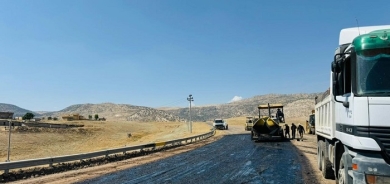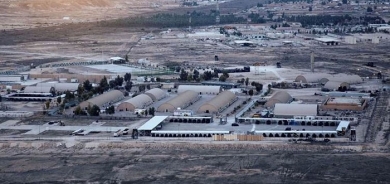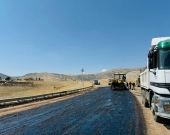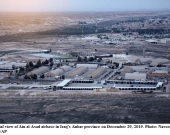Venus makes last in lifetime move across face of Sun; next transit to be in 2117
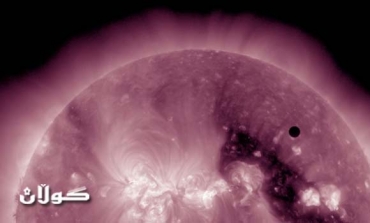
The planet Venus made a slow transit across the face of the, the last such passing that will be visible from Earth for 105 years.
Transits of Venus happen in pairs, eight years apart, with more than a century between cycles. During Wednesday’s pass, Venus took the form of a small black dot slowly shifting across the northern hemisphere of the sun.
Armchair astronomers watched the six-hour and 40-minute transit on the Internet, with dozens of websites offering live video from around the world, according to Reuters.
Close-up views from the Prescott Observatory in Arizona, fed into Slooh.com’s webcast, showed a small solar flaring in the making just beneath Venus’ sphere.
Early Wednesday’s transit, completing a 2004-2012 pair, began at 2209 GMT.
Skywatchers on seven continents, including Antarctica, were able to see all or part of the transit. Even astronauts aboard the International Space Station joined in the spectacle.
Although broken cloud hampered the view for some in Australia, Sydney Observatory held a sell-out viewing with 1,500 people buying tickets to witness the rare passage -- which will not happen again until 2117.
“It’s not like an eclipse where you've got something blotting out the sun,” Fred Watson, astronomer-in-chief at the Australian Astronomical Observatory, told AFP.
“Venus is 100th of the diameter of the sun so it’s essentially just a black spot superimposed on the disc of the sun, but it moves across from one side to the other.”
“I’ve been planning this for a while,” space station flight engineer Don Pettit said in a NASA interview. “I knew the transit of Venus would occur during my rotation, so I brought a solar filter with me.”
It’s not all about pretty pictures. Several science experiments were planned, including studies that could help in the search for habitable planets beyond Earth.
Telescopes, such as NASA’s Kepler space telescope, are being used to find so-called extra-solar planets that pass in front of their parent stars, much like Venus passing by the sun.
During the transit of Venus, astronomers planned to measure the planet’s thick atmosphere in the hope of developing techniques to measure atmospheres around other planets.
Studies of the atmosphere of Venus could also shed light on why Earth and Venus, which are almost exactly the same size and orbit approximately the same distance from the sun, are so different.
Venus has a chokingly dense atmosphere, 100 times thicker than Earth’s that is mostly carbon dioxide, a greenhouse gas.
Its surface temperature is a lead-melting 900 degrees Fahrenheit (480 degrees Celsius) and towering clouds of sulfuric acid jet around the planet at 220 miles per hour (355 kph) dousing it with acid rain.
“Venus is known as the goddess of love, but it’s not the type of relationship you’d want,” an astronomer said on the Slooh.com webcast. “This is a look-but-don’t-touch kind of relationship.”
Scientists are interested in learning more about Venus’ climate in hopes of understanding changes in Earth's atmosphere.
During previous transits of Venus, scientists were able to figure out the size of the solar system and the distance between the sun and the planets.
Early Wednesday’s transit is only the eighth since the invention of the telescope, and the last until Dec. 10-11, 2117. It also is the first to take place with a spacecraft at Venus.
Observations from Europe’s Venus Express probe will be compared with those made by several ground and space-based telescopes, including NASA’s Solar Dynamics Observatory, the joint U.S.-European Solar and Heliospheric Observatory and Japan's Hinode spacecraft.
Six transits have been observed -- in 1639, 1761, 1769, 1874, 1882 and 2004 -- because they need magnification to be seen properly, though the event has happened 53 times between 2000 BC and 2004.
Reuters


